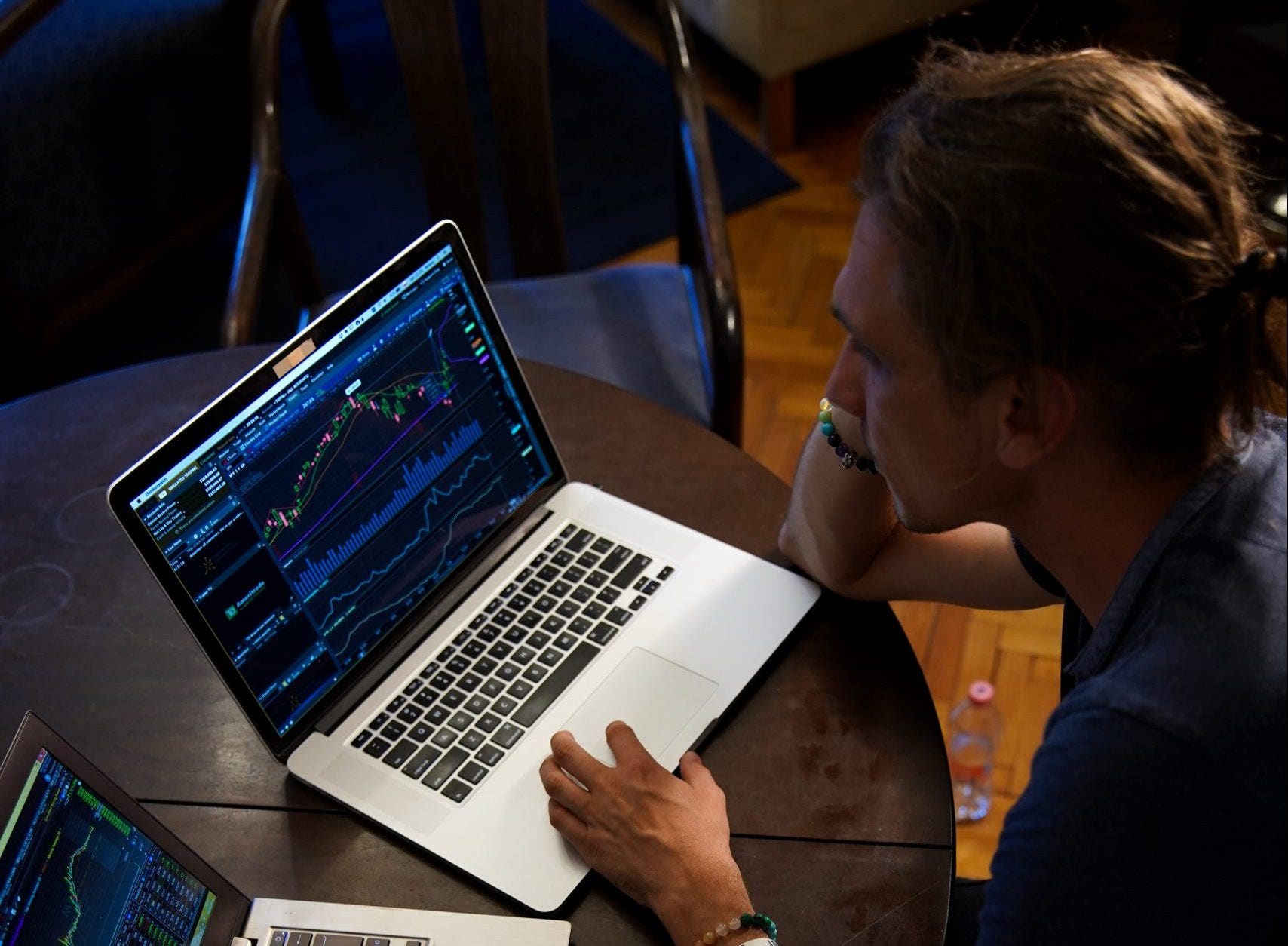
Stock market investing is a long-term process that could help you manage your finances. Investing in the stock market can seem daunting, especially when you are just starting, as it may appear too complex or risky. A careful understanding can help you get started.
Among the two top reasons to invest in the stock market are the possibility of getting higher returns to your investment and to develop financial discipline. For instance, when compared with basic saving instruments such as fixed deposits, investing in stocks has resulted in a higher rate of return in the last decade. Periodic investments inculcate a habit of financial discipline, encouraging you to save money and invest it carefully.
Here’s a brief guide to help you through the process of stock market investing.
What Is The Stock Market?
In simple terms, a stock market is a marketplace where financial instruments are traded — these can be stocks, bonds, commodities, among others.
The two primary stock markets in India are the National Stock Exchange (NSE) and the Bombay Stock Exchange (BSE). The NSE is by far the largest, with over 90% of cash trades. There are also other exchanges for commodities like the Multi Commodity Exchange (MCX) and the Indian Energy Exchange (IEX) for power trading and so on.
All activities as well as participants of the stock markets including day-to-day trades, instruments being traded, exchanges that enable the financial instruments to be traded, are regulated by the Securities and Exchange Board of India (SEBI).
Apart from listing companies, these exchanges also manage indices. An index is a basket of stocks that represents a theme, be it size or industry. It also allows investors a common gauge on the trend in the stock market.
The most common indices in India are the NIFTY and SENSEX. NIFTY is a basket of top 50 stocks by market capitalization listed on the NSE. The SENSEX is a similar index of 30 companies listed on the BSE.
The stock market indices are commonly used to benchmark the performance of fund managers and other stocks. For instance if a mutual fund that benchmarks its performance to the NIFTY did 15% returns this year and the NIFTY did 20%, the mutual fund actually “underperformed” its benchmark. This means you would have been better off just buying those 50 NIFTY stocks instead of relying on the fund managers’ expertise.
How to Invest in the Share Market in December 2023?
You cannot buy or sell directly on the stock market. For this, you have to go through brokers who are authorised to trade on the market or stock brokerage companies that allow you to trade using their platform. The process is simple:
Opening a Trading Account:
To initiate your investment journey, you must open a trading account with a licensed broker or a stock brokerage platform. This account is where you execute buy or sell orders.
Demat Account Creation:
The broker or platform simultaneously establishes a demat account in your name. This demat account holds your financial securities electronically.
Linking to Bank Account:
Both the trading and demat accounts are then linked to your bank account, facilitating seamless fund transfers.
KYC Documentation:
To complete the account opening process, you are required to furnish Know Your Customer (KYC) documentation. This typically involves providing government-authorized identity cards such as PAN card or Aadhar for verification.
Online KYC Process:
Many brokers and brokerage platforms offer an online KYC process, allowing you to submit your verification details digitally. This expedites the account opening, often taking just a few days.
Trade Execution:
Once your accounts are set up, you can trade with your chosen broker or brokerage company. Trading can be conducted online through a user-friendly portal or offline via phone calls.
This process ensures that investors can engage in buying and selling activities on the stock market through authorised channels, promoting a transparent and regulated trading environment.
What Does it Cost to Invest in the Share Market in 2023?
There are a few types of charges that you will usually pay:
- Transaction costs: All brokers are paid a brokerage, which is a fee they take to facilitate a trade for you. With the advent of discount brokers, these costs are quickly shrinking. Apart from brokerage, they also collect taxes and dues paid to the government on each transaction, such as the Securities Transaction Tax (STT), SEBI charges, Goods and Services Tax (GST), among others.
- Demat charges: While your broker or brokerage platform opens your demat account for you, they do not operate it. Demat accounts are operated by central securities depositories such as NSDL or CDSL, under the government’s jurisdiction to safeguard your interest. You are expected to pay nominal annual charges (typically collected by your broker or the brokerage platform) to maintain your account. These charges range anywhere between INR 100 to INR 750.
- Taxes: You pay a percentage of your profit from your investments to the government as taxes. For stocks, if you hold them for longer than a year, you pay long-term capital gains tax, which is 10%, and if you hold for less than a year, you pay short-term capital gains tax, which is 15%. Both of these tax rates change based on cess or surcharge charged by the government.
Types Of Instruments You Can Buy In Share Market In 2023
The key financial instruments traded on the stock market are:
- Equity shares: Issued by companies, equity shares entitle you to receive a claim to any profits paid by the company in the form of dividends.
- Bonds: Issued by companies and governments, bonds represent loans made by the investor to the issuer. These are issued at a fixed interest rate for a fixed tenure. Hence, they are also known as debt instruments or fixed income instruments.
- Mutual Funds (MFs): Issued and operated by financial institutions, MFs are vehicles to pool money which is then invested in different financial instruments. Profit from the investments is distributed between the investors in proportion to the number of units or investments they hold. These are called “actively” managed products where a fund manager takes calls on what to buy and sell on your behalf to generate better returns than the benchmark (like the NIFTY).
- Exchange Traded Funds (ETFs): Increasingly gaining popularity, ETFs essentially track an index like the NIFTY or the SENSEX. Once you buy a unit of the ETF, you hold a part of the 50 stocks in the NIFTY in the same weightage that the NIFTY holds them. These are called “passive” products, which are typically much lower in cost than MFs and give you the same risk or return profile as the index.
- Derivatives: A derivative derives its value from the performance of an underlying asset or asset class. These derivatives can be commodities, currencies, stocks, bonds, market indices and interest rates.
Different Types of Stocks to Invest in 2023
When researching stocks or MFs, you will come across the term “market cap”. Market cap or market capitalization is the value of 100% of the company. Put simply, if say a company’s market cap is INR 10,000 crore, it means that is how much money it would cost you to buy all the shares of the company.
Based on the market capitalization, three types of stocks categorisation exists. It is important to know this because many mutual funds and ETFs are classified based on the market caps they focus on.
- Large cap stocks: SEBI defines large caps as the top 100 stocks by market cap. These companies are some of the largest in the country by revenue, are well-established and are usually market leaders in their respective industries. These are seen as least risky but may not grow as fast as mid or small cap stocks. But they may offer higher dividends and a safe capital reserve in the long term.
- Mid cap stocks: SEBI defines mid caps as stocks ranked top 101-250 by market cap. This usually implies companies with a market cap in a range between INR 8,000 to INR 25,000 crore. These companies are smaller than large caps, capable of higher growth and the potential to disrupt a large company or grow into large cap company. They are considered riskier than large caps but less risky compared to small caps.
- Small cap stocks: All stocks ranked top 251 and below by market cap are considered small caps by SEBI. These are stocks from small companies and are often highly volatile. Compared to the other two, these are seen as quite risky but have the potential for higher returns. Small cap stocks are also less “liquid”, which means that there aren’t as many buyers and sellers for these stocks as for large caps.
Apart from market cap, stocks are categorized by the industry, how much dividend they pay, how quickly they are growing, among others.
How to Know Which Stock to Buy
- Decide your risk appetite
Risk appetite is the amount of risk that you can withstand. Several factors influencing risk appetite include the timeline of investment, age, goal and capital. Another key variable to keep in mind is your current liabilities. For example, if you are the sole earning member of your family then you will be less inclined to take risks. Here, maybe you’ll have more debt, large cap stocks, in your portfolio.
On the other hand, if you are younger, with no dependents, you may have a high risk appetite. This may allow you higher exposure to equities vs. debt. Even within equities, you may be able to invest in more small caps, which are higher risk stocks. The starting point is to make a choice keeping in mind that risk and reward go hand in hand.
- Invest regularly
Now that you have a demat account, you need to allocate funds for regular investment. Set a personal budget, track your expenses, and see how much you can set aside. The best way to invest in the market is to use a Systematic Investment Plan (SIP). A SIP is investing the same amount of money every month in, say, a mutual fund. This allows you to average the different market levels you come in at, maintain good investing habits and slowly increase your investments as you gain confidence.
- Build a diverse portfolio
The basic rule for building any portfolio is to invest in a diverse range of assets. This is because it minimizes the impact if a certain asset performs badly. Diversification extends within the asset class, industry, and cycles. It may be tempting to park all your money in an industry that is in an upward swing. But it is always better to distribute between industries, balancing market cap exposure, and offset the risk of equity shares with stable, but lower return bonds. Finally, use SIPs to make sure you have invested in securities across different market cycles.
- Rebalance your portfolio
As your priorities change with time, your portfolio must also change to reflect this. You must rebalance your portfolio every couple of quarters to make sure you are not over or underexposed to any one stock or asset class. This is also necessary as you grow older and your priorities change. For instance, you may want to lower your risks when you start a family or when you are nearing retirement age.
Bottom Line
Anyone can invest in the stock market. It is a life skill that needs to be honed and like all good things, it needs a little patience, time and study. With thoughtful investment, you can make your money work for you and achieve your goals and dreams.







